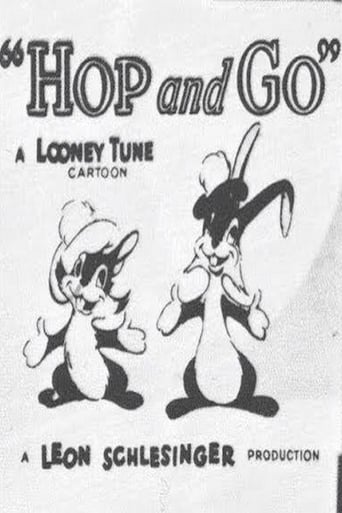Edgar Allan Pooh
. . . the animated short HOP AND GO spends about six minutes establishing that a kangaroo named "Claude Hopper" is a certified goof, and just the final 60 seconds suggesting that even a goof can destroy major Japanese cities (in this case, Tokyo) single-handed. Perhaps one of the HOP AND GO crew had a Brainiac cousin working at Los Alamos, NM, during the time this cartoon was being put together, who let slip a few hints about early A-bomb development (a.k.a. THE REVENGE OF THE NERDS). Maybe these folks were debriefed by the American FBI about their uncanny ability to dream up a future so similar to that planned in secret by "The Authorities." (Director Alfred Hitchcock suffered such a fate during the Pre-production process for NOTORIOUS.) Maybe a high schooler who viewed HOP AND GO when it came out was responsible some months later for loading the Hiroshima-leveling "Little Boy" bomb onto its Enola Gay Chariot of Death aircraft. String Theory and quantum physics inform us that if all this did not happen in Earth's reality, it must have occurred in another nearby dimension.
slymusic
Directed by Norman McCabe, "Hop and Go" is a black-and-white Warner Bros. cartoon starring some unusual characters: a "goofy" kangaroo named Claude Hopper (voiced by Pinto Colvig, the voice of Walt Disney's Goofy), and two Scottish tam-donning r-r-r-r-r-r-rabbits (voiced by Mel Blanc).I'm not sure what to make of "Hop and Go"; was it worth the effort, or was it a waste of time? At any rate, the music score by Carl Stalling is awesome. My favorite musical moments in this cartoon are: the big band theme during the opening titles; "Captains of the Clouds" and "Jingle Bells" when Claude flies in the air; "Singing in the Shower-r-r-r-r-r-r-r"; the jazzy score when one of the rabbits uses a tape measure to calculate jumping distance; and the Hawaiian slide guitar when Claude jumps with his tail still stuck to the ground."Hop and Go" is tacked onto the Looney Tunes Golden Collection Volume 6 Disc 2. But get this: On this particular disc, it sounds like someone has tampered with this cartoon and overdubbed snatches of modern music in certain places that do not fit at all! When preserving old films, such a sacrilegious act is unthinkable.
Lee Eisenberg
One of Norm McCabe's cartoons from his very short tenure as a director at Warner Bros. - he took over Bob Clampett's unit when Clampett took over Tex Avery's, and then Frank Tashlin took over the unit - "Hop and Go" looks like a possible precursor to the Hippety Hopper cartoons. The cartoon portrays a dimwitted kangaroo named Claude Hopper (his voice is provided by Pinto Colvig, most famous as Goofy in the Disney cartoons). A total sucker, Claude never realizes what a pair of sadistic Scottish rabbits are using him for their own personal entertainment! One of the rabbits is named Sandy. I hear that the Scots do often shorten Alexander to Sandy. Anyway, it's an OK cartoon for the brief entertainment that it provides. McCabe never really got a chance to develop a theme or style in his cartoons - the famous Looney Tunes directors all developed their own styles - but the few of his that I've seen certainly have made me laugh. This one did. Worth seeing, although it probably did function more as a place-holder when it came out; 1943 saw the release of such greats as "A Corny Concerto", "Super-Rabbit", "Pigs in a Polka" and "Porky Pig's Feat".
Robert Reynolds
This is an excellent cartoon and is one of a handful directed by Norman McCabe, who is not nearly as well known as other Warner Brothers directors, chiefly because he didn't direct for terribly long. Claude Hopper is a very engaging character similar to Disney's Goofy because he was voiced by Pinto Colvig and all of Pinto Colvig's voice work tends to make the characters sound about as bright as a five watt bulb. There are voices which are so distinctive that they are instantly recognizable and Colvig had one. A remarkably talented man and he's perfect for Claude Hopper, a character so dumb he doesn't realize that the two rabbits are tricking him left and right. The ending is great and in keeping with the times, what with a war on and all. McCabe usually worked some war related reference, most prominent as a rule. Worth the trouble to see. Most recommended.

